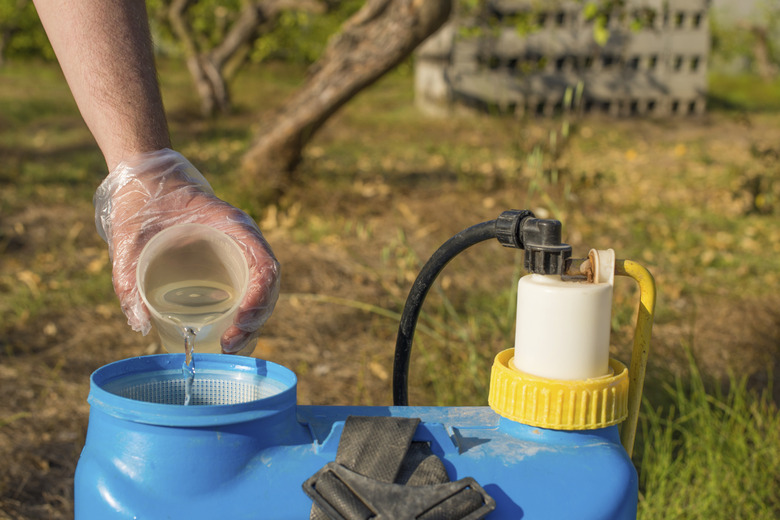Directions For Use Of Daconil Fungicide
Some garden pests are so small you can't see them without a microscope. The damage they cause to your plants, however, is easily seen. Some microscopic fungi cause plant diseases, but they are hard to control once you see evidence of their presence. Daconil, a trademarked name of GB Biosciences Corp., is a preventive fungicide. It contains the active ingredient chlorothalonil, which can help prevent fungal pathogens from harming your ornamental and edible plants.
Grab and Go
One of the available formulations of Daconil is a premixed solution in a ready-to-use spray bottle. Shake thoroughly and spray all surfaces of plant foliage until the Daconil drips from plants. Plants have different requirements that dictate when you begin spraying them, such as when buds begin to break, new leaves emerge or petals begin to fall. Check the chart on the Daconil label to find your specific plant and its needs. Regardless of when you begin spraying, Daconil is not a one-shot fix. Repeat applications typically follow seven- to 14-day intervals, except for label recommendations for some fruit trees that require only two applications per year. If you're spraying edible crops, such as vegetables or fruits, follow the label directions for when you should make your last spraying before you harvest the crops.
Mix With Water First
Daconil is also available as a concentrate that you mix with water to make a diluted solution. The label directions list how much Daconil to mix in 1 gallon of water; depending on different plants' needs, this measurement ranges from 3/4 teaspoon to 1 tablespoon. If you have a 4-gallon sprayer, the label lists equivalent measurements. You can use a hose-end or a tank-type sprayer, using the fine spray option for the best coverage. Add Daconil to the sprayer first, and then add water. Saturate all plant surfaces until the solution drips from plants. Repeat spray intervals and the last safe application times before harvesting edible crops are listed on the label.
Heed the Cautions
Daconil's active ingredient, chlorothalonil, carries the U.S. Environmental Protection Agency's signal word "Warning." This indicates moderate toxicity, which may cause injury to people and wildlife. Wear long sleeves, eye protection and gloves when mixing Daconil and applying it to your plants, and do not spray on windy days or during excessively hot weather. Daconil is not for use on your lawn, and it is toxic to fish and other wildlife, so be careful when spraying around your fish pond. After spraying plants, keep people and pets away from the area until the chemical dries.
Store and Dispose of Properly
Responsible use of Daconil includes proper storage and handling. Keep this chemical cool and dry and out of the reach of children and pets. Once the container is empty, discard it in the trash and do not reuse or refill it. Before discarding the container, triple-rinse it: add water until the container is one-quarter full, recap and shake for 10 minutes, add the rinsate to a mixing tank for future use and repeat two more times. If there is leftover chemical in the container that you do not intend to use, contact your local waste center for disposal instructions. Do not pour the leftover chemical down any drain, inside or outside.
